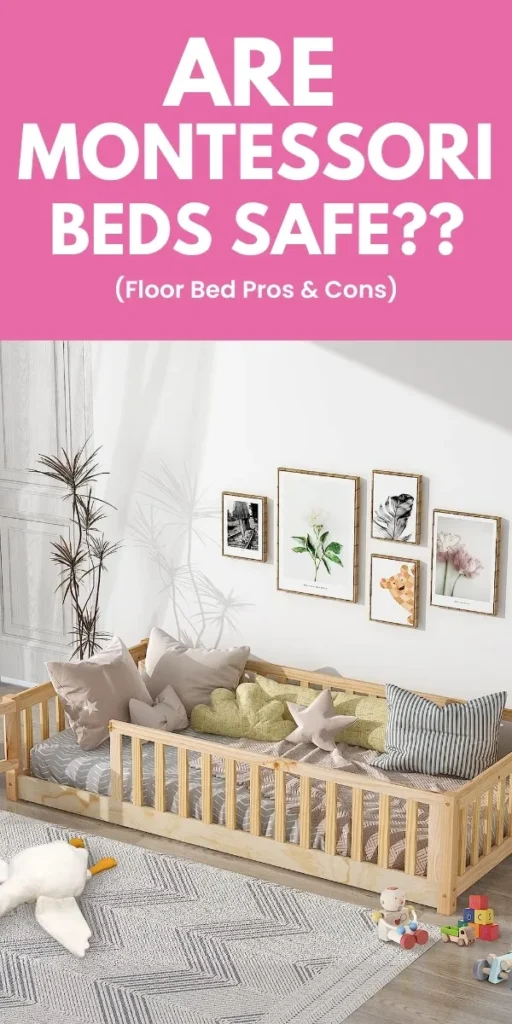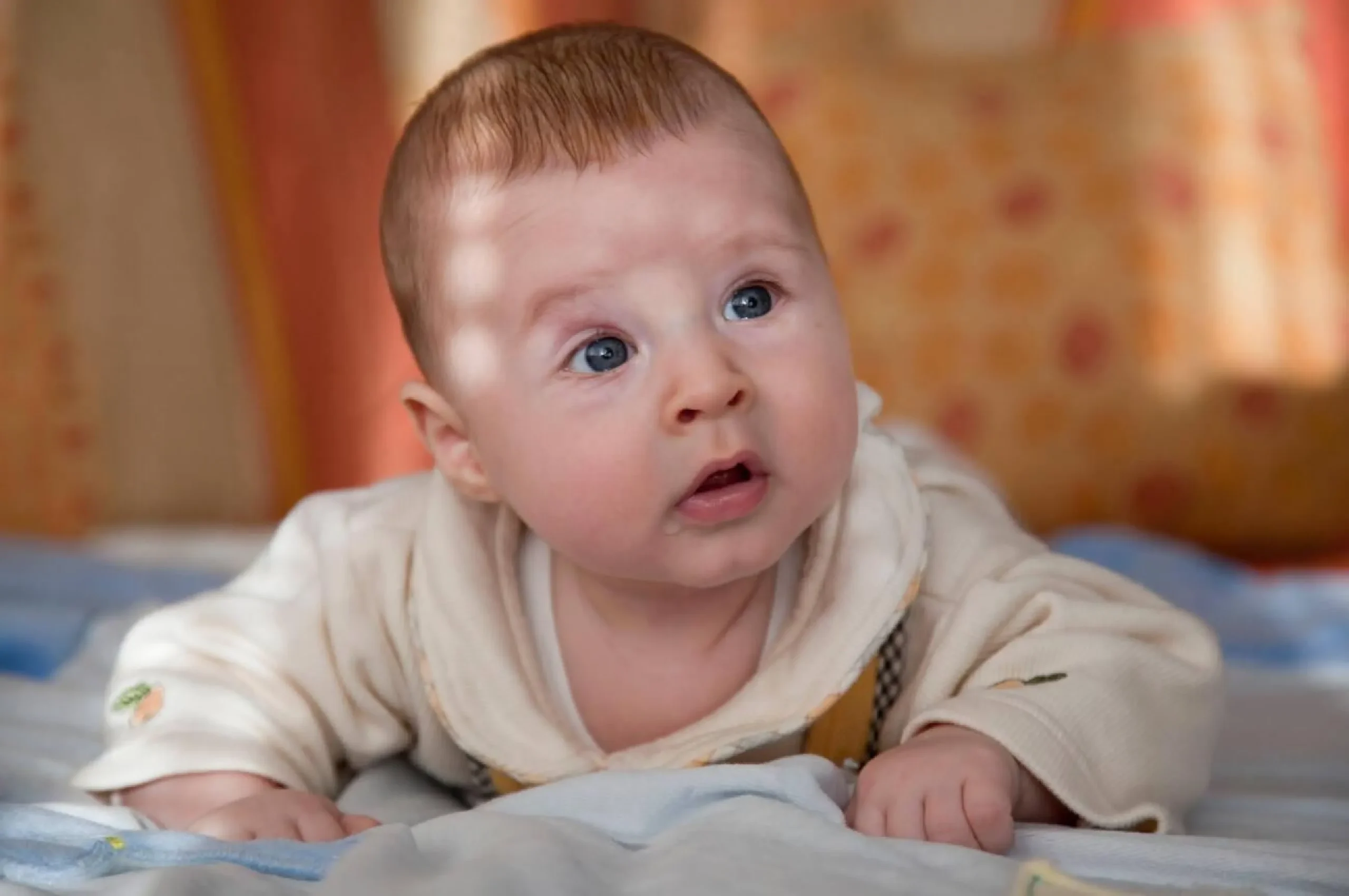As your little one transitions from crib life, the question of sleep arrangements looms large. Should you stick with the familiar crib walls, or embrace the open space of a floor bed, a cornerstone of Montessori philosophy?
For many parents, Montessori floor beds hold immense appeal, fostering independence and exploration. But alongside the allure, concerns about safety naturally arise. Are Montessori beds safe for babies?
Table of Contents
Are Montessori Beds Safe? – A Quick Answer
Montessori floor beds are considered safe for babies when properly implemented and sensibly used.
To minimize risks associated with floor beds, parents should take specific precautions such as placing the bed away from walls and furniture, using a soft rug around the bed to cushion falls, ensuring the room is free of hazards, using a firm and appropriate mattress, supervising young children during their initial experiences with the floor bed, gradually introducing the floor bed, and child-proofing the entire bedroom.
In summary, Montessori floor beds can be safe for babies provided that parents adhere to recommended safety guidelines and continuously monitor their child’s well-being.
Let’s dive into the enchanting world of floor beds, exploring their pros and cons, considering safety concerns, and ultimately equipping you to make an informed decision for your precious little one.
What Is Montessori Floor Bed: A Philosophy of Freedom and Self-Discovery

A Montessori floor bed is essentially a low mattress placed directly on the floor, inviting freedom of movement and self-directed exploration. This aligns with Dr. Maria Montessori‘s belief in creating environments that empower children to learn and grow at their own pace.
Here’s what makes Montessori floor beds so captivating:
- Independence: Children can freely climb in and out of bed, fostering a sense of agency and control over their sleep routines.
- Movement and exploration: The open space allows for natural movement and encourages early motor skill development.
- Connection with the environment: Floor beds integrate seamlessly with the surrounding room, blurring the lines between sleeping and other activities.
- Reduced anxiety: Open access can alleviate separation anxiety for some children, offering comfort and independence.
Safety First: Addressing Concerns about Montessori Floor Beds
Naturally, concerns about falls and injuries top the list for parents considering floor beds. Here’s a breakdown of the safety considerations:
Potential Risks:
- Falls: Falling out of bed is a potential concern, especially for younger children or those prone to tossing and turning.
- Hazards in the environment: Furniture, sharp edges, or electrical cords near the bed pose potential risks.
- Cold floors: Some children might feel uncomfortable with the coolness of the floor compared to a mattress base.
Mitigating the Risks:
- Age considerations: Floor beds are generally recommended for toddlers around 18 months or older when they can confidently climb and descend.
- Mattress height: Choose a low-profile mattress to minimize the impact of potential falls.
- Babyproofing the environment: Ensure the surrounding area is clear of obstacles and hazards.
- Transition gradually: Introduce the floor bed slowly, allowing your child to adjust to the change.
Ultimately, safety is paramount. By carefully considering your child’s development and creating a safe sleep environment, you can turn the potential risks of a floor bed into manageable concerns.
Montessori Floor Beds: Pros Vs Cons
Now, let’s weigh the pros and cons of Montessori floor beds to help you make an informed decision for your little one:
Montessori Floor Beds: Pros vs Cons
| Pros | Cons |
|---|---|
| Safety: Low to the ground, reducing risk of falls. Encourages independence and movement without danger. | Babyproofing Room: Requires extensive childproofing of entire room due to increased access. |
| Independence: Promotes self-reliance and decision-making by allowing free access to bed. Supports self-directed sleep routines. | Early Rising: May lead to children waking up and exploring room before desired time. |
| Development: Encourages gross motor skills through climbing and getting in/out of bed. Fosters sense of responsibility and agency. | Sleep Challenges: May not suit children who struggle with self-soothing or staying in bed at night. |
| Transition Ease: Simplifies transition to toddler/twin bed as child is already accustomed to sleeping on the floor. | Accessibility: Can be harder for adults to tuck in children or monitor them at night. |
| Minimalistic Design: Aesthetically pleasing and fits well with minimalist decor. Can be used for longer than a crib. | Cost: May be more expensive than a standard crib. |
| Reduced Frustration: Eliminates frustration and tantrums associated with crib bars. | Less Air Circulation: Lower to the ground, potentially impacting air circulation if room is poorly ventilated. |
Ultimately, the decision to use a Montessori floor bed is a personal one, dependent on your child’s needs, your parenting style, and your comfort level with potential risks.
Here are some additional factors to consider:
- Your child’s temperament and risk-taking tendencies
- The layout and safety of your child’s bedroom
- Your own sleep and supervision strategies
Trust your intuition and do your research: Talk to other parents who have used floor beds, consult with pediatricians and Montessori experts, and most importantly, observe your child to see if they’re ready for the freedom a floor bed offers.
Montessori Floor Bed Alternative (You Should Consider)

Remember, floor beds aren’t the only option. You can explore several alternatives or even combine approaches to create the perfect sleep haven for your little one:
- Transitional cribs: Some cribs have removable sides that allow for gradual transition to a floor bed.
- Toddler beds: Low-profile beds with secure rails offer a sense of containment while minimizing fall risks.
- Combination approach: Some families use floor beds during the day or for playtime, and stick with cribs for nighttime sleep.
No matter which path you choose, prioritize your child’s safety and comfort. Create a peaceful sleep environment that fosters their independence and growth, whether it’s on the open floor or within the secure walls of a crib.
Conclusion: Embracing the Journey, Not Just the Destination
In the end, the debate about Montessori floor beds versus traditional cribs boils down to one thing: what’s best for your child?
There’s no one-size-fits-all answer, and the ideal sleep arrangement will depend on a unique blend of factors like your child’s personality, development stage, and your family’s comfort level.
Remember, the journey towards healthy sleep habits is just as important as the destination itself.
Whether you choose a floor bed, a crib, or something in between, focus on creating a loving and nurturing environment that encourages your child to feel safe, secure, and confident about falling asleep.
Here are some final takeaways to guide you:
- Observe your child: Pay attention to their temperament, developmental milestones, and sleeping habits to gauge their readiness for increased independence.
- Safety first: Ensure the sleep environment is free of hazards, regardless of the bed type you choose.
- Be flexible: Don’t be afraid to adjust and refine your approach as your child grows and changes.
- Trust your instincts: Ultimately, you know your child best. Follow your intuition and choose the approach that feels right for both of you.
Also Read: How to Choose A Montessori Bed Read Here

The decision to use a Montessori floor bed isn’t just about a piece of furniture; it’s about embracing a philosophy of respect, independence, and trust.
By understanding the pros and cons, addressing safety concerns, and exploring alternative options, you can confidently navigate the world of early childhood sleep and create a nurturing haven for your little one to blossom.
